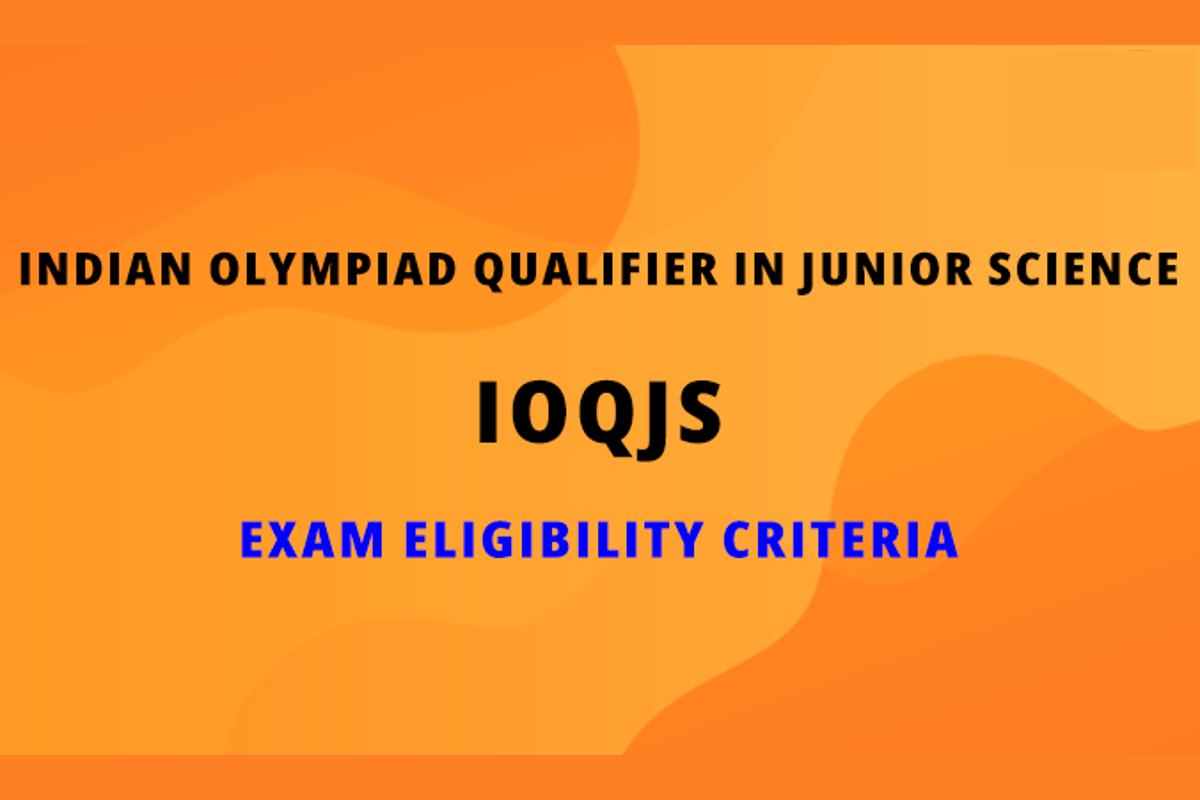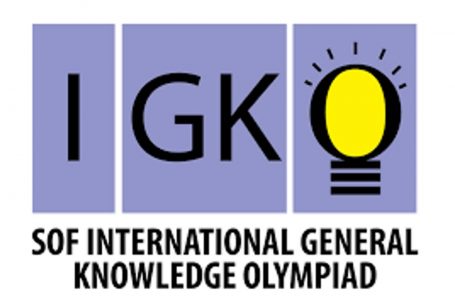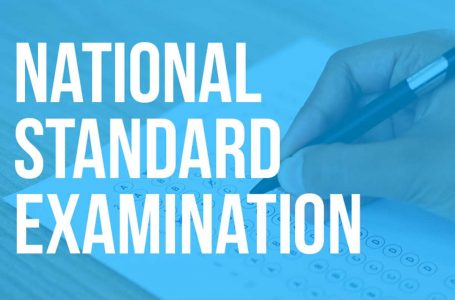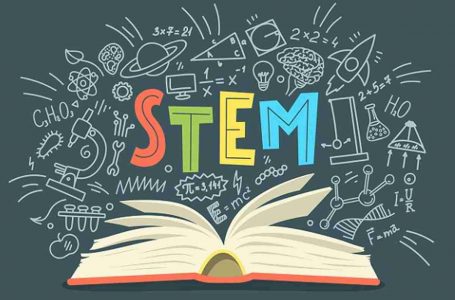IOQJS (Indian Olympiad qualifier in junior science )

Indian Olympiad qualifier n junior science is the first level for the international science Olympiad. It is a single-level test with a time limit of three hours. The examination is usually held in January and consists of two papers. This examination is conducted by the IAPT and HBCSE mutually. The primary purpose of this examination is to provide basic knowledge about science to the students. In addition, it gives a platform for the students to multiply their abilities and skills in the field of science.
Table of Contents
IOQJS Overview
Conducting Body | IAPT and HBCSE |
Conducted during | January |
Total timing | 3 hours |
No. of papers | 2 |
Medium of language | English |
Applicable for | Students of classes 11th and 12th |
IOQJS Exam pattern
The Indian Olympiad qualifier in junior science is for secondary school students, and this Olympiad covers all the important topics from physics, mathematics, and biology. The detailed exam pattern of the IOQJS Olympiad is given below :
Exam pattern | Detail |
Exam duration | There are two paper Paper 1- 1 hour Paper2 – 2 hour Total time- 3 hour |
Exam mode | Pen and paper-based |
Type of question | Pa[er 1 contains multiple choice questions, and paper two has subjective type question |
Negative marking | -1 mark for every wrong answer |
IOQJS Eligibility criteria
The Indian Olympiad qualifier in junior science is a local-level examination conducted to select participants for national and international. Therefore, before appearing for the test, the students should be aware of all the requirement need to be filled. ImportaCriticalia that students need to remember are as follows :
- The students who are interested in the examination of IOQJS can not appear in the other international test such as IOQ S, IOQB, IOQA, and IOQP.
- The student must have been born between 1st January 2006 and 31st December 2007.
- The candidate must be an Indian native and only acquire an education in India.
- A candidate still needs to complete their studies and start their higher education in college or any institution.
- The candidate must have a passport with them.
- The students from India or NRI are not eligible to appear in the examination.
- The candidate should be studying at any of the affiliated boards, such as CBSE, ICSE, or any state board that can partition into this examination.
- Only those candidates can appear into the examination who have studied since 30th November 2018 or before 30th November 2018.
- Any student who was a school student till November 2018 is also eligible to give this examination.
Syllabus for IOQJS examination
Indian Olympiad qualifier in junior science is a national-level examination conducted by the Indian association of physics teachers. The detailed syllabus of the IOQJS exam is given below:
Unit | Syllabus |
Matter nature and behavior | Matter Definition Volume, density, shape, and other characteristics of solids, liquids, & gases. Absorption of heat & change of state Sublimation, Freezing, Melting, Evaporation, Condensation Elements, Mixtures & Compounds Homogenous & Heterogeneous mixtures Separation of the components of a mixture Solutions, & concentration of solutions Colloids & suspensions Atoms & molecules Atomic & molecular masses Law of constant proportions Relationship of mole to mass of particles Mole concept Protons, Neutrons, and Electrons Valency Isotopes Chemical formula and symbols of common compounds Isobars |
Chemical substances | Types of chemical reactions Balanced chemical equations Definition and general properties of acids, bases, and salts Concept and importance of pH scale Preparation & Uses of: Bleaching powder Plaster of Paris Sodium hydroxide Washing and baking soda Metals & Non-metals Formation & properties of ionic compounds Reactivity series Corrosion and prevention of corrosion Properties of ionic compounds Metallurgical processes Nature & nomenclature of Carbon compounds with functional groups Homologous series Saturated & unsaturated carbon compounds Covalent bonding of carbon compounds, & their chemical properties Soaps & detergents Ethanol Ethanoic Acid Modern periodic table Atomic number Metallic & non-metallic properties Valency Early examples of periodic tables |
Organization in the living world | Prokaryotic and Eukaryotic Cells Structure & functions of cells Cell organelles Structure & functions of plant tissues and animal tissues Biological Diversity Health & Diseases |
Life Process | Control & coordination in plants and animals Heredity & Evolution Reproduction in animals and plants |
Force motion and work | Force definition and types Newton’s laws Distance and displacement Velocity, acceleration, related graphs Uniform circular motion Gravitation Floatation Sound Work, Energy, & Power |
Effect of electric current | electric current Potential difference Ohm’s law Resistance Series and parallel combination of resistors Heating effect of electric current Light Relation between P, R, I, and V. Magnetic effects of electric current |
Light | Reflection Refraction Refractive index Magnification Functioning of the lens in a human eye Dispersion and scattering of light through a prism |
Our environment | Physical Resources Biogeochemical cycles in nature Natural Resources |
Food production | Use of fertilizers Organic farming Plant and animal breeding Selection for quality improvement and management Protection of crops from pests and disease |
IOQJS Registration Process
- Registration for the junior science Olympiad starts in October.
- Students who want to participate in this exam can register themselves through the official website that is iaptexam. in
- The application fees for the IOQJS exam will be the same as last year.
- The student is recommended to keep an eye on the official website of IAPT for information and current updates.
IOQJS Results
- The exam result will be released online and notified on the official website of IAPT.
- The result of paper one decides whether the student is eligible for the paper two exams.
- Only those students can participate in the paper two who acquired over the cut-off in paper 1
- The Indian association of physics teachers and HBCSE has the authority the set the cut-off for every state and post it on their official website.
Steps for checking the IOQJS result
- Go to the official website www,iapt.org.in.
- Next, enter your roll number and DOB.
- Click on the submit button, check your result, take a screenshot, download fit, or future.
FAQS
- How can the student verify the exam result?
Ans: The result is available on the official website of HBCSE and IAPT. You can check it using your password and account details.
- Are IOQJS and NSEJS similar exam
Ans: Yes, these both are the same IOQJS is the combination of the NSEJS exam, and also, these both have the same syllabus from the secondary school level syllabus up to class 10.
- How to enroll for the IOQJS exam
Ans: Students can enroll on their official website and fill out the application form. The application window is enabled from November to December.





